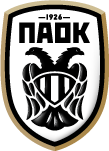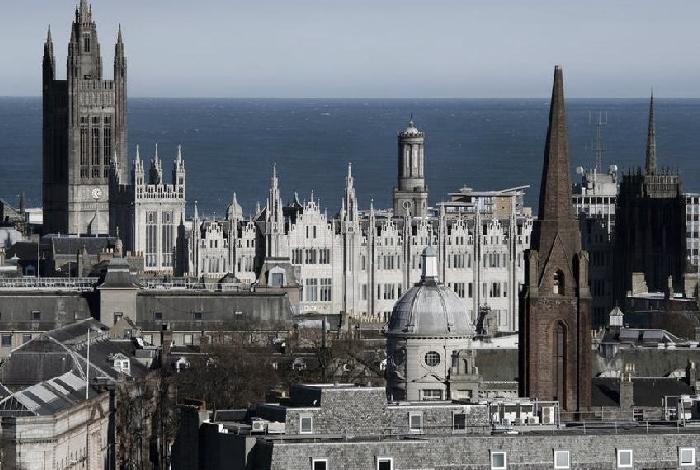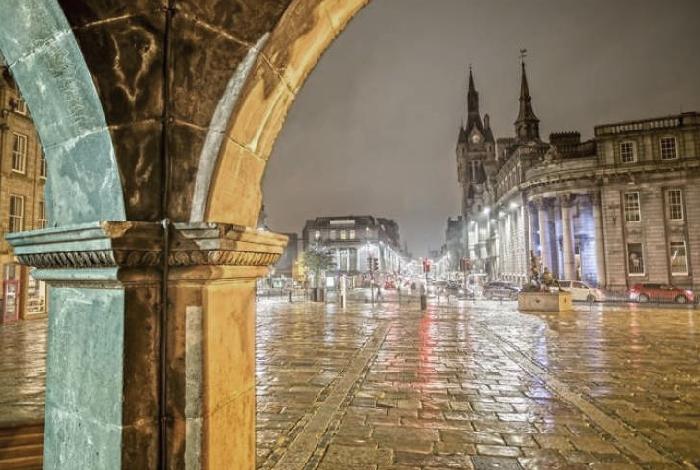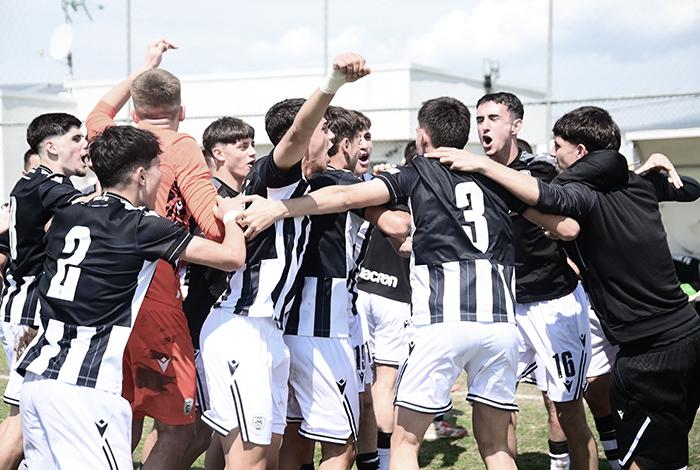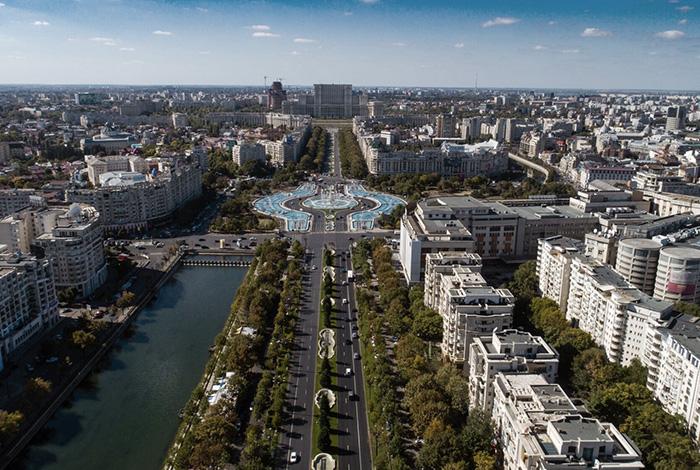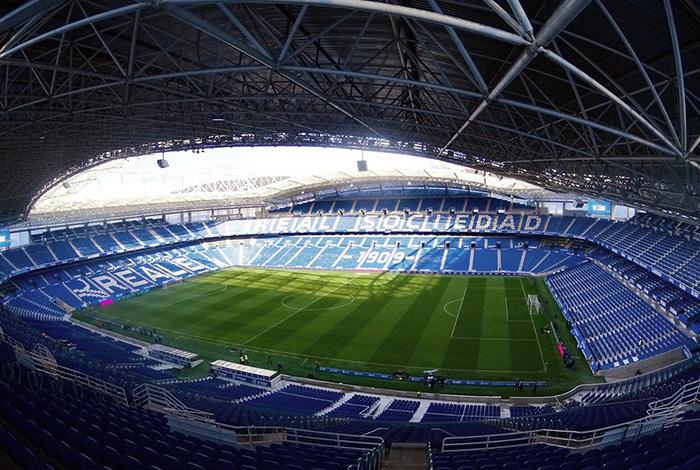The Aberdeen of two European titles
From Edinburgh to Aberdeen, PAOK returns to Scotland for Matchday 3 of the UEFA Conference League. This time, our visit comes just a few days after Storm Babet swept through the northeastern part of the country. Historic Aberdeen, who can boast of having beaten Real Madrid and winning two European titles, the team once built by Sir Alex Ferguson, may not have had the best start to the league, but they remain a title-hungry club, and, if nothing else, a formidable opponent.
Four Scottish championships, seven Scottish Cups, six Scottish League Cups, one European Cup Winners’ Cup (1983) and one UEFA Super Cup (1983) adorn their trophy cabinet. And all of this would never have happened had the only 37-year-old Alex Ferguson not taken over the team in 1978, when he insisted on breaking the …monopoly of Glasgow. It sounded utopian at the time, when getting even a point in Glasgow seemed a tough feat, but in Ferguson’s first year the team did just that at Ibrox from Rangers.The rest is history…
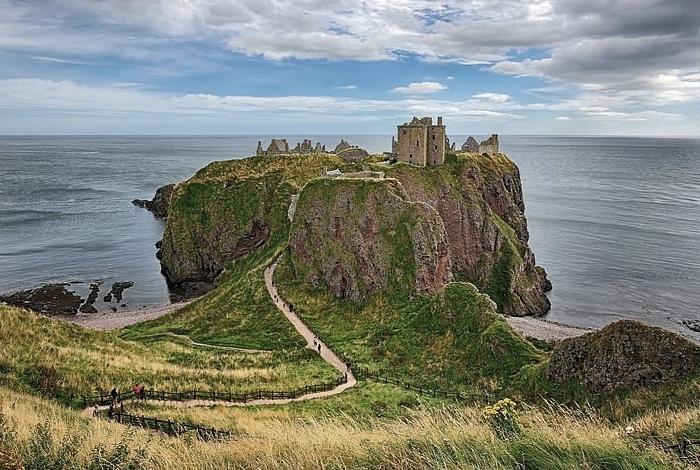
- The current Aberdeen FC was founded in 1903, following the merger of three clubs based in the city (Aberdeen, Victoria United and Orion). They played their first game on 15.08.1903 against Stenhousemuir.
- Their biggest win came against Peterhead 13-0 in the Scottish Cup in 1923. Their heaviest defeat (9-0) came against Celtic on 6 November 2010.
- Under the guidance of Sir Alex Ferguson, the club won three league titles, four Scottish Cups, a League Cup, the European Cup Winners’ Cup, the European Super Cup and a Drybro Cup. All in seven years!
- They won the championship in the 1979-80 season, plus two more in 1983-84 and 1984-85. From 1982 to 1984, they won the Scottish Cup. During the 1983 European Cup Winners’ Cup, Aberdeen beat Sion, Dynamo Tirana and Lech Poznań to face German Cup winners Bayern Munich (a 0-0 draw in Munich, and 3-2 win in Scotland). In the semi-final they faced the now inactive Belgian club Watersay (won 5-1 at home, lost 1-0 away) and faced Real Madrid in the final.
- On 11 May 1983 at Gothenburg’s …Scots-fueled Ullevi Stadium, Aberdeen beat Real Madrid 2–1 with Hewitt’s goal in the 112th minute to become the third Scottish team to win a major European trophy. Alfredo di Stefano said at the time: «Aberdeen have elements that money can’t buy, they have soul and team spirit, built in a family tradition.»
- The club continued with such momentum that they also won the European Super Cup against Hamburg (0-0 in the first match, 2-0 in the second).
- They reached the semi-finals of the Cup Winners’ Cup the following season, in 1983-84.
- When Sir Alex left for Manchester United, the team then had eight different managers from 1986 to 1999!
- Only Scottish coaches have sat in the dugout, with the exception of Dane Ebe Skodvall (1999), whose first year was associated with some of the heaviest defeats in the club’s history. He stayed on until 2002, however, when he was replaced by Steve Patterson, who was sacked almost immediately when he failed to turn up for a match due to drinking too much, apparently…
- They won their first trophy in 19 years in 2014, beating Inverness 4-2 on penalties in the Scottish League Cup final.
- In recent seasons’ Europa League competitions, they have been beaten in the third qualifying round four times. In 2015–16 by Kairat, in 2016–17 by Maribor, in 2017–18 by Apollon Limassol and in 2019–20 by Rijeka.
- Aberdeen were runners-up in the league in 2016–17, reaching both cup finals, but were beaten 3–0 by Celtic in the League Cup and 2–1 again by Celtic in the Scottish Cup. They also finished second the very next season.
- In 2019 they signed an agreement with MLS team Atlanta United, which acquired 10 percent of the club’s shares for €2,000,000.
- In the 2022-23 season Aberdeen finished third, getting the European ticket for the Europa League Play Offs. There they were eliminated by Hacken with an aggregate scoreline of 5-3.
- From white jerseys and blue shorts, Aberdeen switched to yellow and black (hence «The Wasps») and then to red and white.
- The club did not have an official crest before 1972. Now, however, its logo features two stars, signifying the two European trophies.
- Aberdeen fans call themselves the «Red Army».
- In terms of local rivalries, Aberdeen have rarely played in the same division as their geographically nearest neighbors (Peterhead, Montrose, Arbroath). In the early 1980s, moreover, due to the success both domestically and in Europe of Aberdeen and Dundee United, the pair were known as the New Firm, but Dundee United mainly had a rivalry with neighboring Dundee. Not exactly a rivalry with Rangers either, as they have their own much older Old Firm with Celtic. Of course, Aberdeen’s feud with Rangers arose after a series of incidents at matches between the two clubs in the 1980s – tackles and fouls that go beyond the … legal sense of the term – as well as frequent violent clashes between their fans. Perhaps not, it can be said that there has been a rivalry with Inverness since 2004. After 2010, moreover, the competition with Celtic increased. Incidents that occurred at matches were mainly related to political unrest.
- Aberdeen’s …nicknames are plentiful. «The Dons» has been in use since at least 1913, with unclear origins. Perhaps it comes from the word ‘don’ meaning ‘teacher’, given the town’s history as a university, perhaps a reference to the nearby River Don, or something derived from the word Aberdonians. Prior to this, the team was known as ‘The Wasps’ or ‘The Black and Golds’, due to the striped yellow and black look of the era. As is the case with many teams that play in red, Aberdeen are also called «The Reds», while some fans also refer to them as «The Dandy Dons» or «The Dandies».
- Rival clubs occasionally refer to Aberdeen as ‘The Sheep’ and their fans as ‘Sheep Shaggers’ (we won’t translate it…). As Aberdeen fans have a sense of humour…they adopted ‘The Sheep’ and made it into a song with the title ‘The Sheep are on fire’. Originally however, it was sung as a joke about an Aberdeen fan who was ‘set on fire’ on a train wearing a homemade sheep costume!
Granite State
- Scotland is loved for its unruly spirit, the Highlands, misty castles, Sean Connery and Aberdeen, a city carved out of granite, shimmering in the sun. The centuries-old narrow, medieval city, around 1800 began to transform into the robust – thanks to the rich oil fields – cosmopolitan and elegant Aberdeen of today, which nevertheless retains the indelible charm of its history.
- Scotland’s third largest city, in the north-east of the country, has a population of 230,000 and is built at the mouth of the rivers Dee and Don into the North Sea. It is characterized by elaborate architecture and historic buildings, paved streets, magical gardens, suburbs and fairytale farmhouses. It doesn’t go to bed early, it’s teeming with students, galleries and of course pubs. Here is a mini guide of the city that will host PAOK:
- Aberdeen is 150 km north-east of Edinburgh and approximately 650 km north of London.
- The University of Aberdeen, with its academic reputation, dates back to 1495 and is the third oldest university in Scotland and the fifth oldest in the English-speaking world. It was originally known as King’s College. The campus buildings date back to the 16th century, most notably King’s College Chapel with its distinctive Crown Tower. The university has invested 220 million euros in new facilities, approximately 13,500 students study there, while five Nobel Prize winners have graduated from it.
- Named after the 1800 Acts of Union with Ireland, Union Street is about a mile long and is a feat of engineering skill. Locals call the grand avenue the «Granite Mile.» It began construction in 1801 as a large viaduct over difficult terrain. But Union Street’s granite terraces were so costly and partly the cause of Aberdeen’s bankruptcy between 1814 and 1825.
- Union Terrace Gardens is a large …underground garden on the west side of the city centre. It dates back to the Victorian era and has an old viaduct located at one end. One of the statues that adorn the garden is that of William Wallace.
- Aberdeen is one of the few major cities in the UK to have a sandy beach! Aberdeen Beach & Boardwalk is a long stretch of golden sand along the eastern part of the city.
- The old city was for a long time isolated. It only became part of the city of Aberdeen in 1891. Today the area is dominated by the campus of the historic University of Aberdeen. A walk through the old town is a must. After all, it is about half an hour’s walk from the city center.
- Balmoral Castle was built by Queen Victoria and Prince Albert. It was completed in 1856 and has been the country home of the British royal family ever since. Although only a small part of the castle is open to visitors (the ballroom), the extensive gardens are always open to the public.
- It is estimated that there were once 3,000 castles in Scotland. You can admire 17 of them on the Castle Trail tour, which takes place in the area around Aberdeen.
- In the walls of St Machar’s Cathedral, part of the body of William Wallace is said to be buried. The Scottish nobleman and patriot, protagonist of the war against the English during Scottish independence, was executed in 1305. His body was dismembered and sent to various corners of the country as a warning to dissenters.
- The Tolbooth Museum is housed in one of Aberdeen’s oldest and most interesting buildings, a 17th-century former prison. The museum focuses on local history, especially in relation to crime and punishment over the centuries. Apparently, there are those who believe the building is haunted!
- Marischal College was built in 1837. It is the second largest granite building in the world!
- You will obviously visit one of the many whiskey distilleries! Aberdeenshire and nearby Moray are home to many. The closest are Glen Garioch Distillery (just 30 minutes drive from the city center) and Royal Lochnagar Distillery (near Balmoral Castle). Aberdeen is also approximately 1 to 1.5 hours drive from the famous ‘home of Chivas Regal’, Strathisla Distillery, Glenfiddich Distillery or Cardhu.
- Entry to most of the city’s museums and main attractions is free!
- Local people sometimes speak a dialect called Doric. They are called Aberdonians.
Pittodrie Stadium
- Just 550 meters from the North Sea and with a unique …intervention between it and the beach, King’s Links golf course, Aberdeen’s ‘home’ is perhaps the most chilled out – not of course, in terms of the atmosphere created by the her friends-field in Great Britain. Opened in 1899 – with a 7-1 win over Dumbarton – Pittodrie Stadium was refurbished in 1993 and has a maximum capacity of 20,866. Throughout their existence Aberdeen have played at Pittodrie.
- Pittodrie takes its name from the Pictish (old Scottish dialect) and translates as ‘dung place’ as when Aberdeen bought the land in 1891 it was used to stable police horses and was on a dump.
- On 15 August 1903, 8,000 spectators were there to watch Aberdeen’s first game (1-1 with Stenhousemere).
- The record attendance is 45,061, during a Scottish Cup match between Aberdeen and Hearts on 13 March 1954.
- Consists of four stands, the Main Stand, which also houses the club offices and players’ facilities, the Merkland Road (aka Red Shed) which is opposite the Main Stand and hosts the largest number of spectators, and the Richard Donald Stand to the east, which was completed in 1993 with guest suites, among others. ¼ of Merkland Road hosts the opposing team’s friends.
- In 1978, Pittodrie became the first fully covered, all-seats stadium in Britain.
- On 6 February 1971, a fire destroyed part of the main stand and destroyed the club’s dressing rooms and offices. The Scottish Cup trophy was saved by firefighters.
- 15 Scotland internationals have been played at Pittodrie. There Scotland have won ten times, drawn twice and suffered three defeats, most recently a 1–0 loss to the Netherlands on 9 November 2017.
- Since 2005 Pittodrie has hosted four international rugby matches.
- It has also been used for concerts, such as those of Elton John and Rod Stewart.
- Since 2009, Aberdeen have been considering the prospect of a new stadium, as further development of Pittodrie is not possible due to the age of the ground and restrictions from the surrounding area. Since then, sites have been found, councils have rejected or approved proposals, which have not materialized, along the way the COVID-19 pandemic has put everything on hold and now Aberdeen, from August 2021, is considering an alternative plan to build a stadium on the city’s beach.
